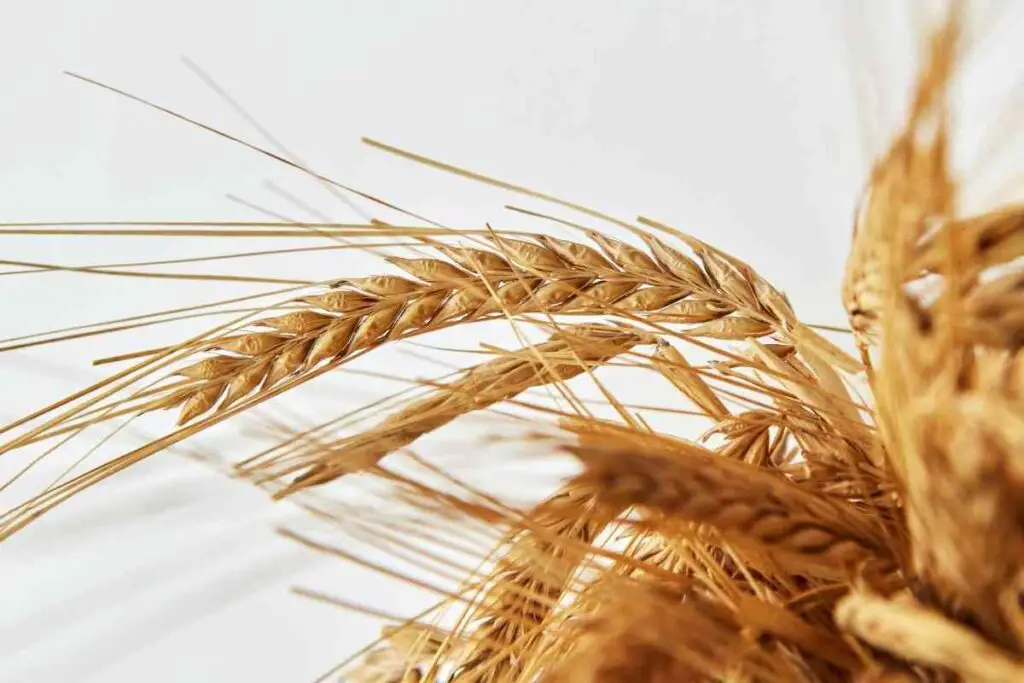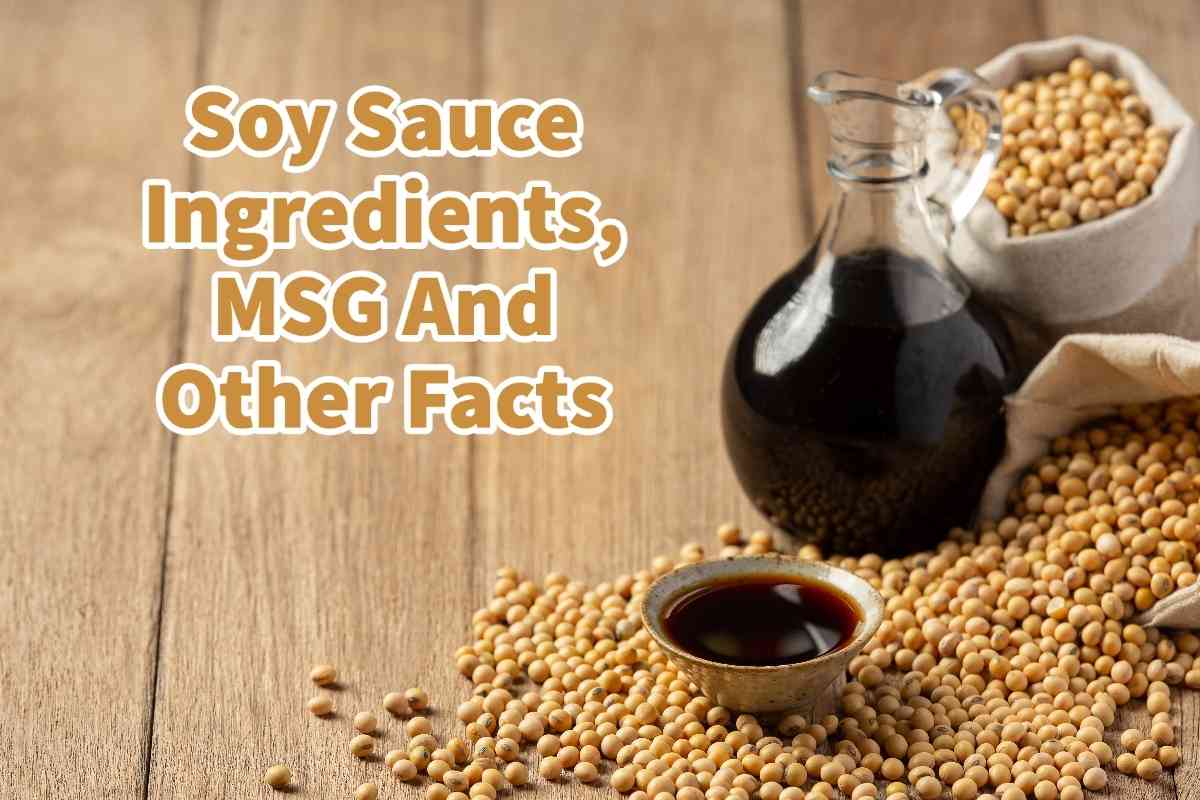Soy sauce is a very favorable ingredient used in most Asian cooking. It originated in China over 1000 years ago.
Soy sauce is produced when soybeans, wheat, water, and salt are fermented with a culture mold for a few months to a few years. Two basic methods are used to produce soy sauce: the traditional and chemical methods.
Table of Contents
Some soy sauce has added MSG to enhance the flavor, but most traditionally brewed soy sauce will not; all soy sauce has some natural MSG, similar to many other foods.
Ingredients For Soy Sauce
The ingredients for soy sauce are straightforward – wheat and soybeans. But where it gets interesting is how these two ingredients are processed.
Soy sauce is a salty liquid condiment traditionally produced by fermenting soybeans and wheat. Most people believe that soy sauce originated in China even though all parts of Asia have different kinds of soy sauce.
Regional varieties of soy sauce have different amounts of fermented soybeans and wheat, resulting in the soy sauce having different tastes, colors, and flavors.
Soy sauce is called soy sauce in American English but is sometimes called “soya sauce” in British English.
The actual ingredients of soy condiment include:

- Soybeans – Soybeans are a legume native to East Asia and are widely grown around the region. Soybeans have a variety of uses, including soy sauce.

- Wheat – A roasted wheat is then used to make the soy sauce.

- Water – Water is placed in with the soy sauce.

- Salt – Salt is also used, so the soybeans and wheat are brimmed in the water and salt solution.

- Cultured Mold – The soy sauce is mixed with a cultured mold aspergillus. What kind of cultured mold is used can differ for different soy sauces.
All of these ingredients are then naturally fermented to create soy sauce. The process of soy sauce is not too different from many other fermented foods, such as wine or alcoholic beverages.
Soy Sauce And MSG
Soy sauce has natural MSG; some producers may add additional MSG to boost the flavor. But the natural soy sauce MSG content is minimal and similar to many other foods such as salad dressing, mayonnaise, ketchup, barbeque sauce, and mustard.
The organic or natural soy sauce would not have any added MSG, but trace amounts of MSG are found due to how soy sauce is fermented and made. Soy sauce is not alone with naturally occurring MSG. Parmesan cheese, tomatoes, oysters, mussels, seaweed, and many other foods also have trace amounts of naturally occurring MSG.
MSG is also commonly found in canned, fast, and processed foods. Most people eat MSG in their foods and do not even know it.
Some soy sauce producers may add MSG to boost the flavor. But many others, such as Kikkoman, a famous brand, say they have not added MSG to their soy sauce. Many other high-quality soy sauces would be the same.
How Is Soy Sauce Made?
Today there are two basic methods to produce soy sauce. One is the traditional method many suppliers continue to use, and the other is the chemical method. The methods can also vary according to the area and where the soy sauce is made.
The Traditional Process Of Made Soy Sauce
Traditional soy sauce is soaking soybeans in water and then roasting and crushing the wheat. A cultured mold aspergillus is added to the mixture, and the soybean and wheat mixture is left for two or three days to develop and allow the mold to grow.
Water and salt will be added, and the entire mixture will be placed in a large fermenting tank for at least five to eight months. Some organic and traditional soy sauce manufacturers may put the soy sauce in a wooden barrel and allow it to sit for two years or over two summers.
The mixture is now left to ferment so that enzymes from the mold will act on the soy and wheat mixture so that the mixture starts to break down into amino acids gradually. The starches are converted to simple sugar and then fermented to lactic acid and alcohol.
Once the mixture has finished the process, the mixture is laid out on the cloth and pressed to release the liquid. The liquid is then pasteurized to kill any bacteria. However, some traditional soy sauces are not pasteurized on purpose.
Once it has been pasteurized, the soy sauce is then bottled. High-quality soy sauce will only use natural fermentation. The soy sauce that uses natural fermentation usually says “naturally brewed.” If you want a naturally fermented soy sauce, look for the “naturally brewed” words on the label.
The Chemical Process To Make Soy Sauce
Chemical production of soy sauce is another method used to produce soy sauce. The chemical production process is much faster and cheaper than the traditional method.
The method is known as acid-called hydrolysis, and it can produce soy sauce in a few days instead of many months or years for the traditional method.
The soybeans are heated to 175 degrees Fahrenheit (80 degrees Celcius) in this chemical process and mixed with hydrolysis acid. The acid breaks down the proteins in soybeans and wheat.
As the chemical process is not fermented as the traditional method of soy production, the end product is not as tasty, nor does it have the rich soy sauce smell as the soy sauce produced with the traditional method.
Because of this, extra flavor, color, and salt are often added to the chemical soy sauce. Also, the chemical process produces some undesirable such as carcinogens that are not present in the traditional brewed soy sauce method.
In Japan, the soy sauce that is Chemically produced is not even allowed to be labeled and sold as soy sauce. But sometimes, the traditional and chemical soy sauce is mixed to help to lower the soy sauce production costs.
In some other countries, chemically produced soy sauce may be sold as soy sauce. The small packets you get away with for your Asian meal are often made from chemically produced soy sauce.
Soy sauce is a natural condiment used for thousands of years. Most countries in Asia have been making soy sauce the same way for thousands of years. Soy sauce is one of the condiments that continues to withstand the test of time.
At A Bus On A Dusty Road, we talk about everything about travel, life, sailing, and ex-pat living. We are all about “Living Life As A Global Citizen.” We explore social, cultural, and economic issues and travel.
We would love to have you be part of our community. Sign up for our newsletter to keep up-to-date by clicking here. If you have any questions, you can contact me, Anita, by clicking here.
Listen to our Podcast called Dusty Roads. You can find it on all major podcast platforms. Try out listening to one of our podcasts by clicking here.
Subscribe to our A Bus On A Dusty Road YouTube Channel filled with great videos and information by clicking here.
Related Questions
How Many Islands Are In The Philippines?
The Philippines has over 7600 miles within its sovereignty. The Philippines is considered an archipelago nation because many islands are within its territory. The Philippines is divided into many islands in the north, the Visayas in the central area, and Mindanao in the south.
By clicking here, you can discover How Many Islands Are In The Philippines?.
How Much Wind Is Too Much For A Beginner Sailor?
For a beginner sailor, the wind is usually recommended to be under 10 knots. Those who are more experienced or with a larger boat can consider going up to 12 knots of wind. A knot is not the same as miles per hour or kilometers per hour but is faster than these measurements.
By clicking here, you can discover How Much Wind Is Too Much For A Beginner Sailor?
What Soy Sauce Do The Japanese Use?
Japan has a variety of soy sauces that they have used for centuries. Today the most popular soy sauce is Koikuchi. At least 80% of all soy sauce produced in Japan is Koikuchi soy sauce. But even the Koikuchi soy sauce comes in various types and grades according to its content and how they are produced.
By clicking here, you can discover What Soy Sauce Do The Japanese Use?

